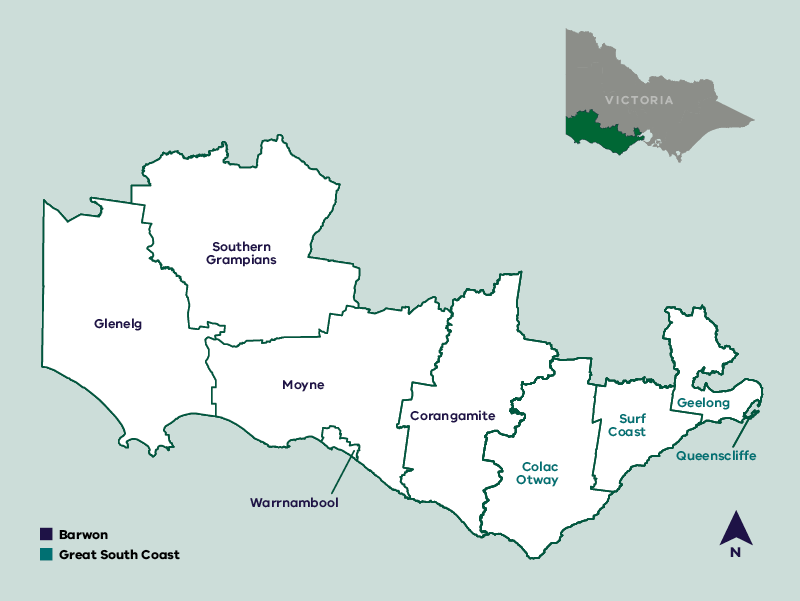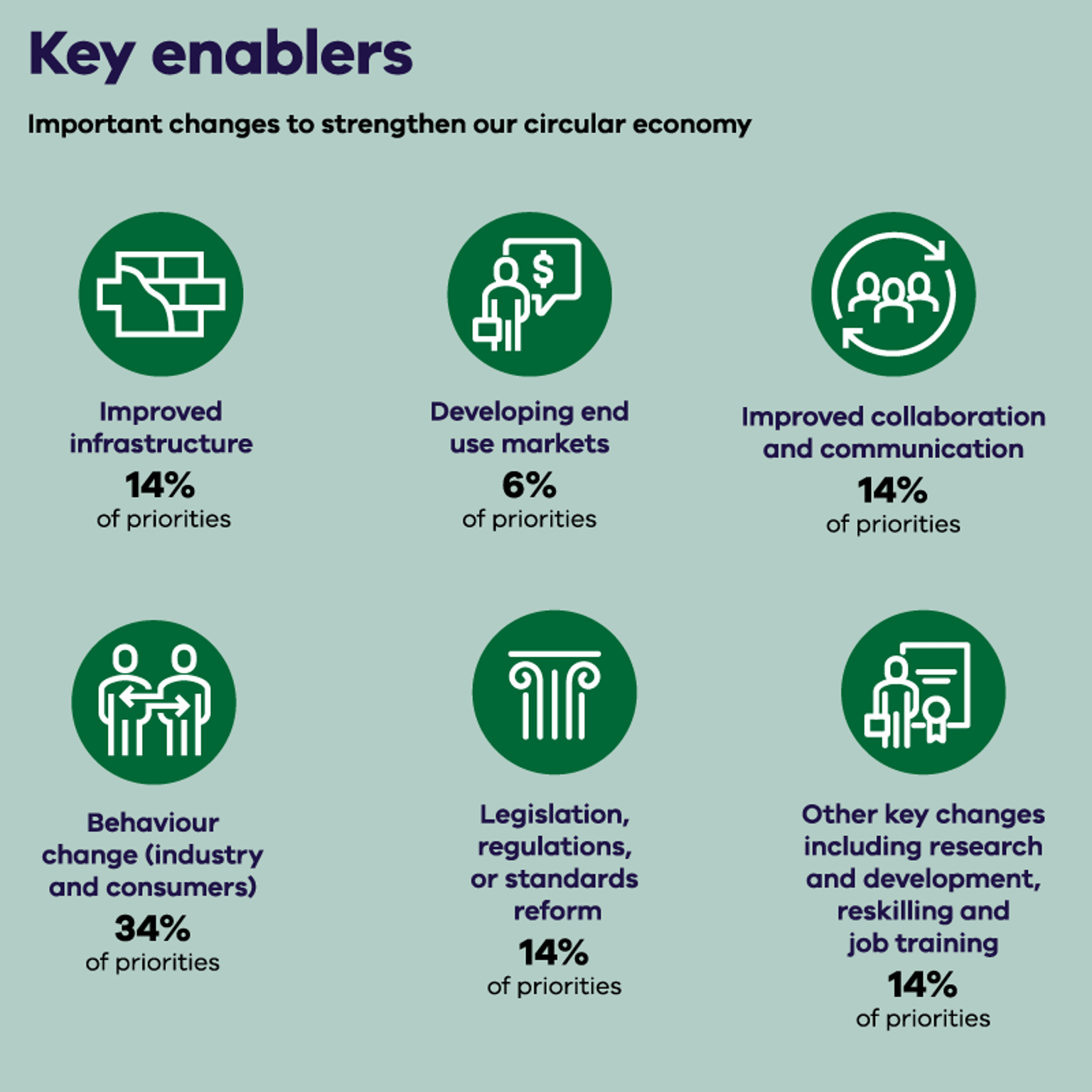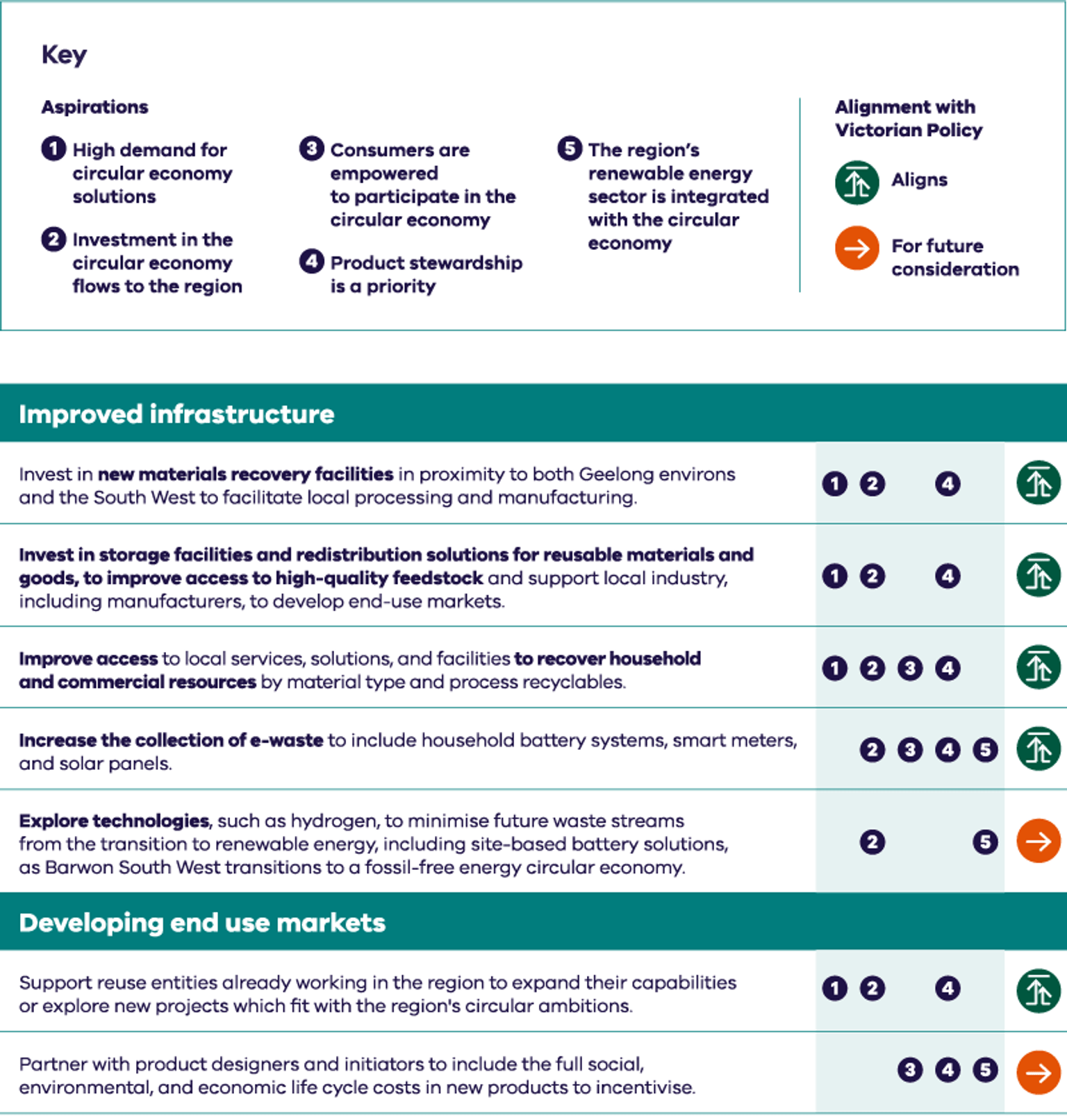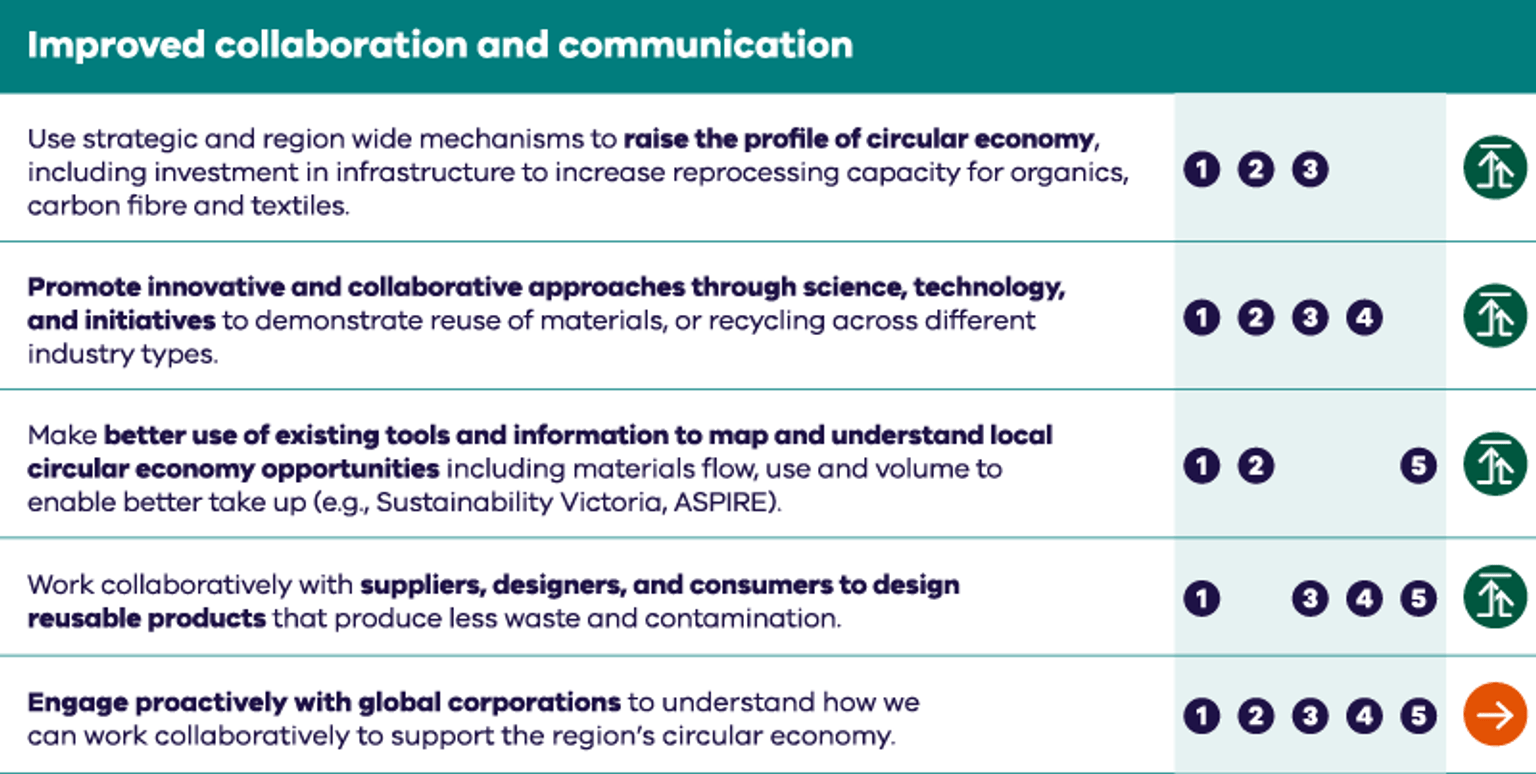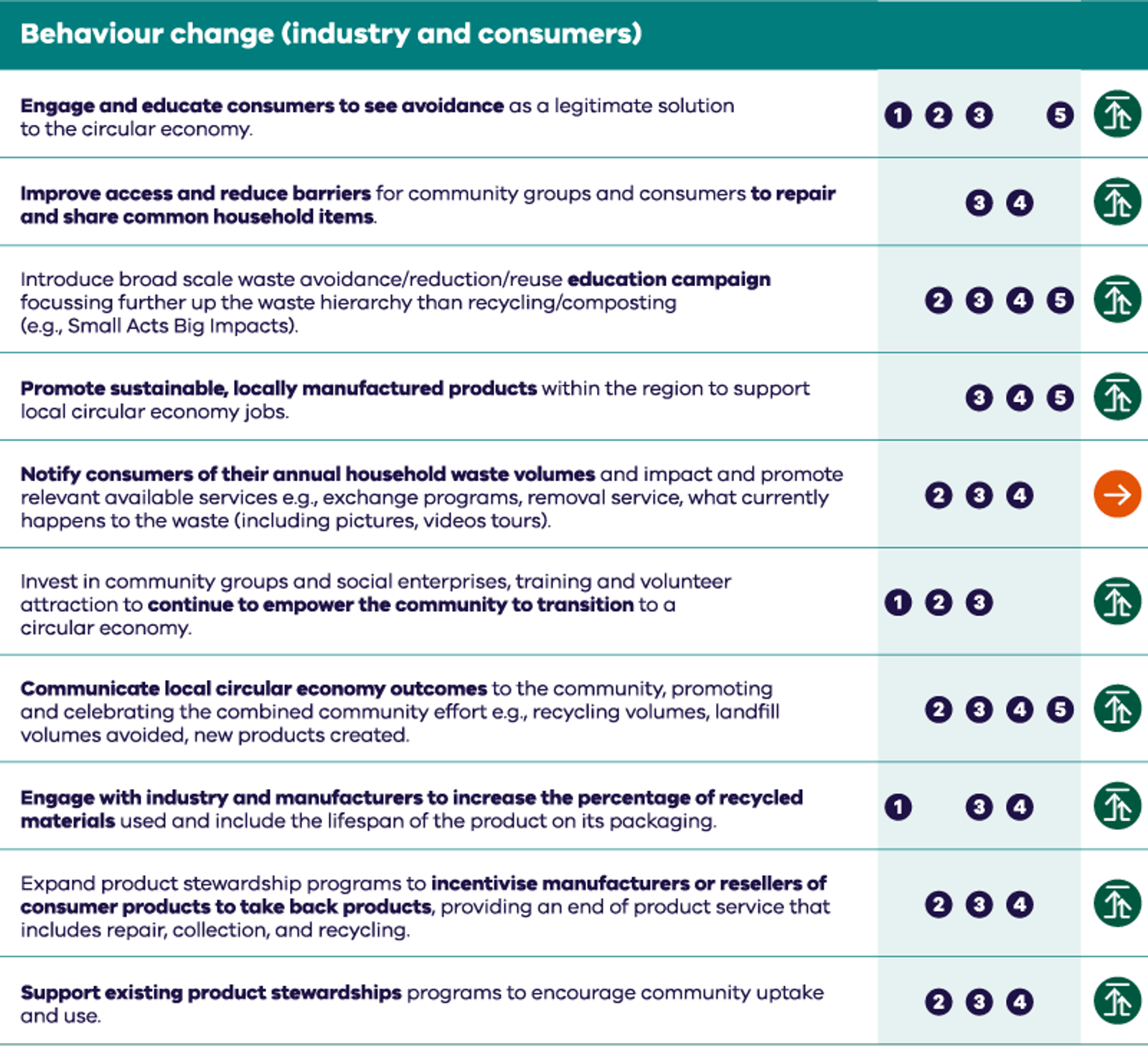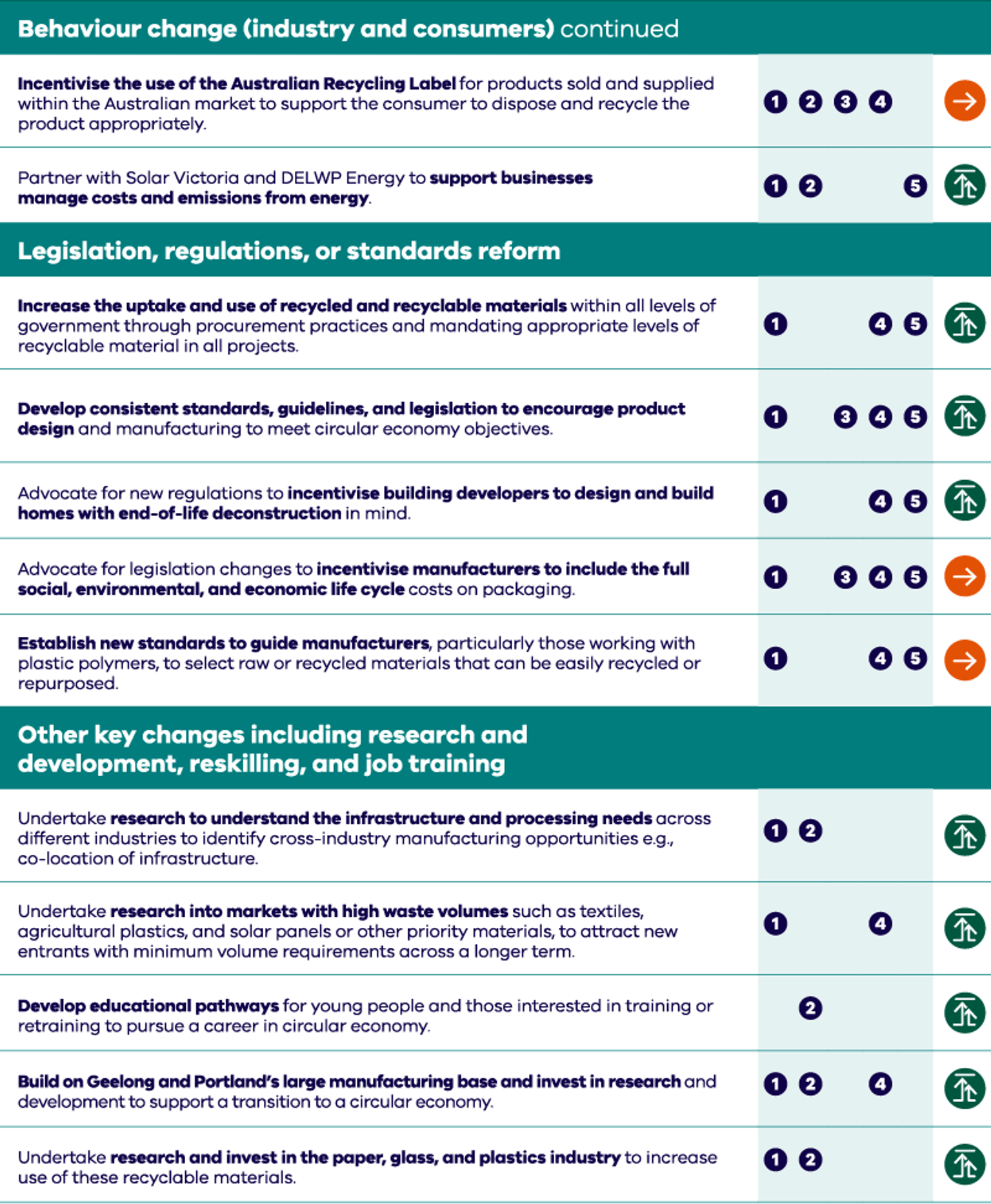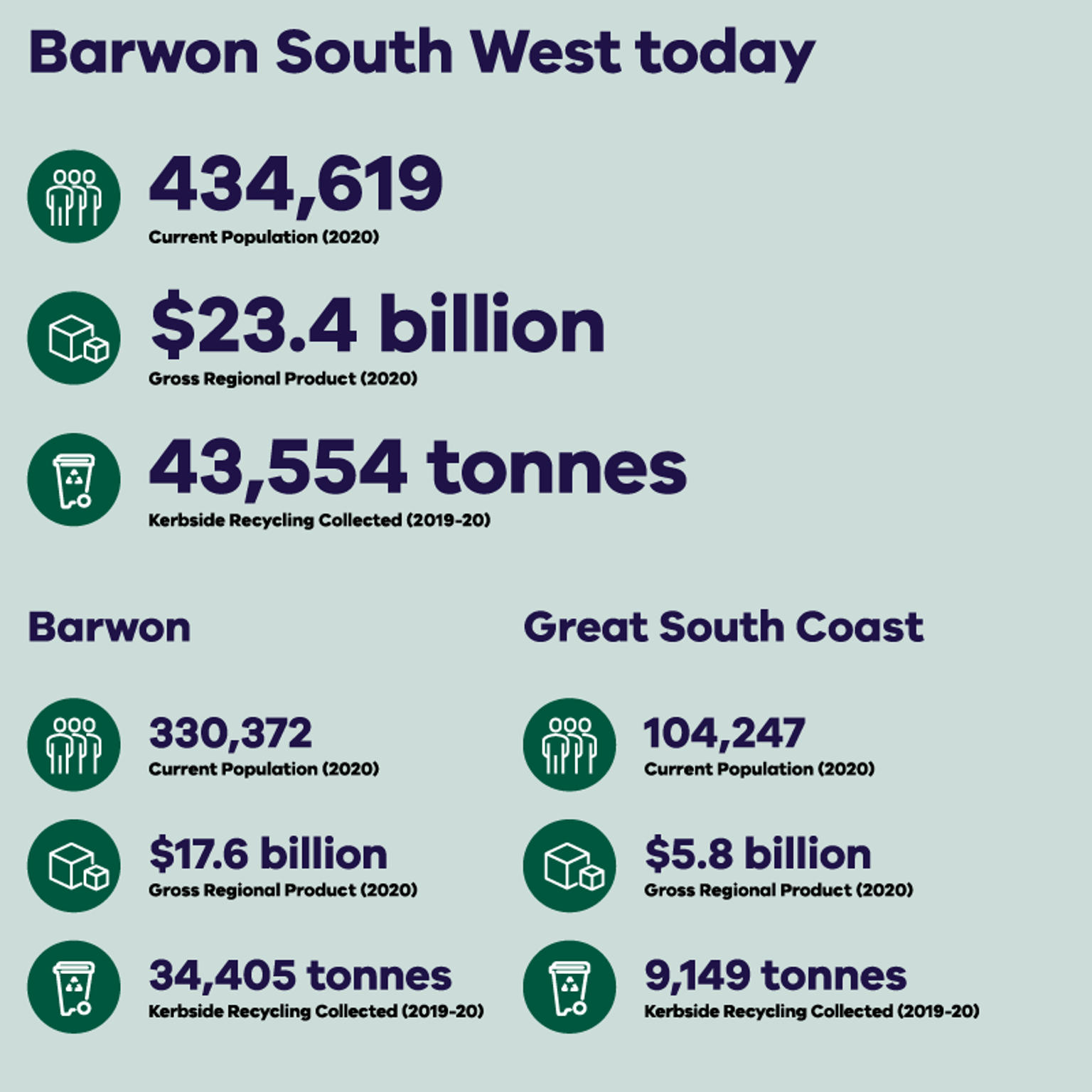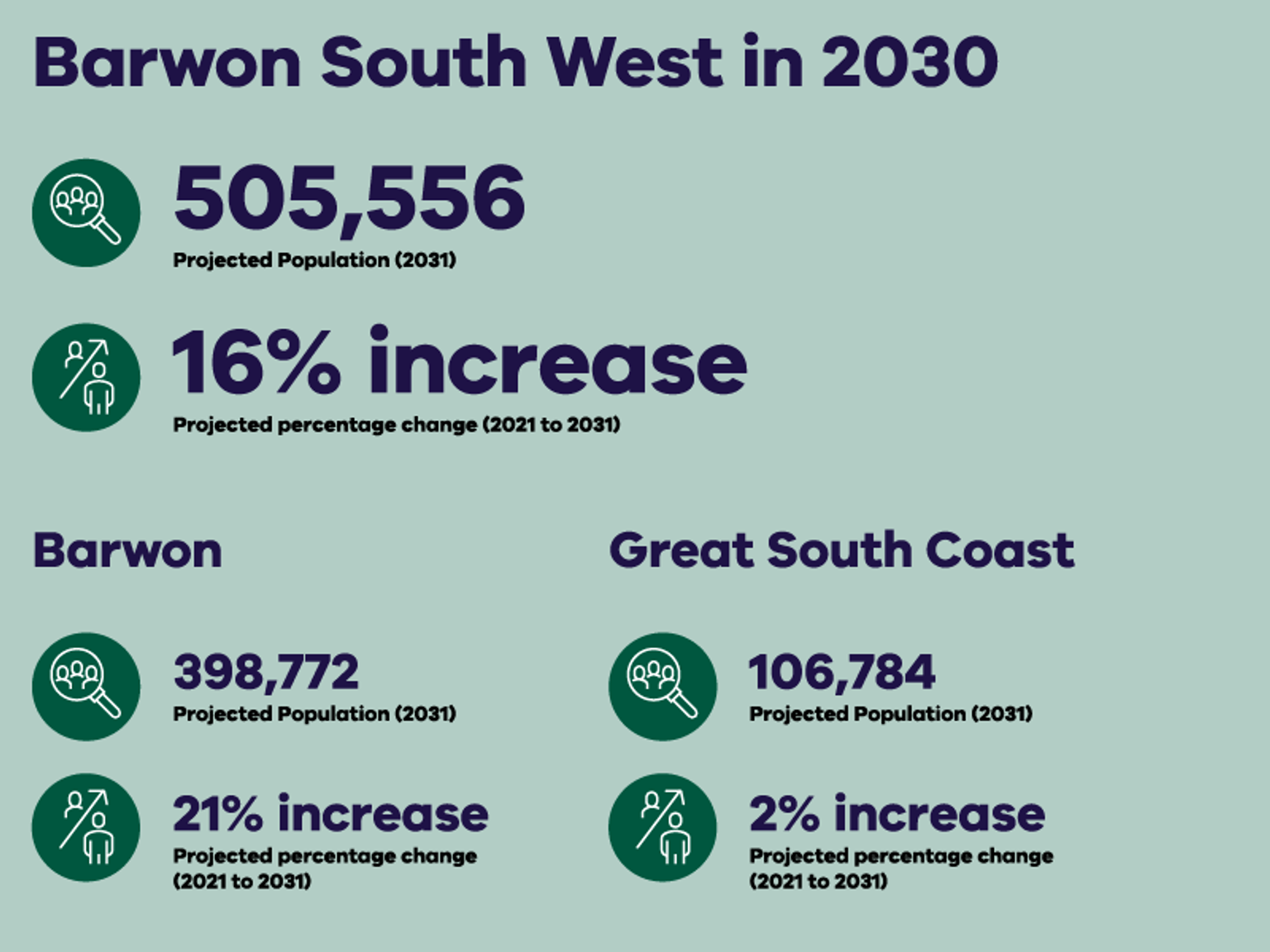The Barwon South West regional circular economy plan sets out Barwon South West’s aspirations to 2030 for a sustainable and thriving circular economy
Representatives from 55 organisations contributed to the plan, including:
- local government
- businesses and business associations
- manufacturers
- social enterprise
- the waste and resource recovery industry
- research and education institutions
- and the Victorian Government.
They participated in robust discussions and workshops facilitated by the Victorian Government designed to encourage strategic thinking about their region, where they are now, where they want to be by 2030, and how they can work together to get there.
Aspirations to 2030
Barwon South West’s five circular economy aspirations to 2030 are detailed below, along with six important changes, or ‘key enablers’, that have been identified to help realise these aspirations.
By 2030, in Barwon South West
1. There is a high demand for circular economy solutions
Participation in the regional circular economy is supported and encouraged through consistent regulation, investment decisions based on evidence, and opportunities to collaborate.
2. Investment in the circular economy flows to the region
The Barwon South West region is known as a leader in circular economy through collaboration, commitment to and investment in education, infrastructure, and processing capabilities.
3. Consumers are empowered to participate in the circular economy
Consumers are informed and empowered to make environmentally conscious choices. They understand the environmental impact of their purchasing decisions and actively avoid waste.
4. Product stewardship is a priority
Products and materials are created within the Barwon South West region with an understanding of their lifecycle. They are easy to reuse, repair, repurpose or recycle. Manufacturers are supported to take up extended producer responsibilities.
5. The region’s renewable energy sector is integrated with the circular economy
The use of non-renewable energy sources is reduced.
Key enablers
Priorities to achieve our aspirations
Barwon South West has developed 35 priorities to achieve their circular economy aspirations to 2030. Each priority has been identified as contributing to one or more aspiration and has been grouped by Key Enablers. Many of the priorities align with current Victorian Government policy, whilst others will be for future consideration.
Barwon South West Today
Barwon South West representatives developed the region's circular economy aspirations and priorities. The representatives brought a local understanding of the region’s strengths and challenges. They considered ‘where we are today’ as a region, before projecting forward to ‘where we want to be’ in 2030 and beyond.
The process identified the region's key strengths. These strengths will help the region work towards their 2030 aspirations.
The region is large and diverse and was split into two major sub-regions: Barwon and the Great South Coast.
Barwon's population is large, concentrated, and close to Melbourne's metro areas. This means there is a large volume of recycled and reused material available. The sub-region has well developed transport infrastructure and strong existing regional partnerships.
The Great South Coast has a great diversity of industry. The sub-region has strong transport connections as well as space for industrial development. It also has several current circular economy projects already underway.
Refer to Victoria's Regional Economic Development Strategies (REDS) for in-depth economic analysis.
Strengths
Barwon sub region
- Size of the population and current household mix, making it suitable for trialling projects due to the volume of waste stream availability.
- Networks and existing collaborations between local government and Deakin University; CSIRO and Deakin University and G21 Alliance and Victoria Cleantech Cluster.
- Business diversity which already generates a broad range of recoverable resources and presents an opportunity for use in recycled products and materials.
- High availability of brown-and greenfield land and transport infrastructure and connections.
- New technologies to recover waste streams that have been difficult to sort and process (plastic and e-waste included).
Great South Coast sub region
- Diversity of industry in the region: agriculture, renewable energy, food processing and education.
- Population size and land features: deep aquifer and space for industrial development.
- Current projects and the opportunity to build on these projects, e.g. BioGrow in Colac, demonstrations across the Great South Coast Group of Councils.
- Proximity to South Australia and strong transport connections. Renewable energy sector and potential to co locate collection services for solar panels and materials used.
Barwon South West in 2030
Barwon South West representatives also considered the region’s challenges.They developed the region’s circular economy priorities to mitigate these challenges.
A key challenge for Barwon will be the closure of the Drysdale landfill in 7-10 years. There is low engagement with the circular economy system and low volumes of some material streams. It also has uncertain market conditions.
The size of the Great South Coast and accessibility to infrastructure are challenges. Finding and retaining staff, including industrial workforce, is difficult. There are challenging market conditions and lack of business continuity.
By 2030, the Barwon South West region is forecast to be home to 505,000 people, increasing by 16 percent from 2021. Barwon is forecast to grow much faster than the Great South Coast, 21 percent compared to 2 percent.
Higher rates of waste and recyclable materials are likely where populations increase. This will increase demand for sorting, processing, and storage infrastructure. Increase material transport out of the region will place added pressure on regional roads.
Some areas that are not forecast to increase their populations may continue not to need household collection. This could present a challenge for local councils and industry aiming to divert materials from landfill.
Refer to Victoria's Regional Economic Development Strategies (REDS) for in-depth economic analysis.
Challenges
Barwon sub region
- Lack of community involvement and participation in circular economy system and managing this with a growing population
- Low volumes of some waste streams
- Closure of Drysdale landfill (in seven to ten years) placing pressure on the region to recover resources from landfill
- Uncertain market conditions: competition for feedstock, instability of end markets, dominance by larger operators and waste export bans discouraging investment
- Funding cycles differ local councils, making it difficult for industry and markets to warrant commercial investment.
Great South Coast sub region
- Size of the geographical area to cover
- Limited industrial workforce and availability of staff is already challenged
- Market conditions and restrictions: lack of control over processing and location of product to commercial providers
- Lack of business continuity plans in place, existing monopolies
- Restrictive land-use planning (proximity to residential areas or environmentally sensitive areas) Climate impacts on local industries, e.g. dairy and impact on volume.
Barwon South West regional circular economy plan
Engagement program summary report
For more information on the Engagement Program refer to the Regional circular economy plans engagement summary report.
Updated
